I want attention to be understood as a connection, not just mental effort.
In the digital media environment, attention will continue to be a success metric, even if the ways of the attention economy change. However, measuring it flatly with time spent, number of visitors, etc. is reductive. Optimizing for these metrics is also psychologically harmful when we are designing for the quality of the experience and not for productivity, like our leisure activities (Netflix) and social relationships (all social networks). (My thesis, Attentive Design, discusses this topic in detail).
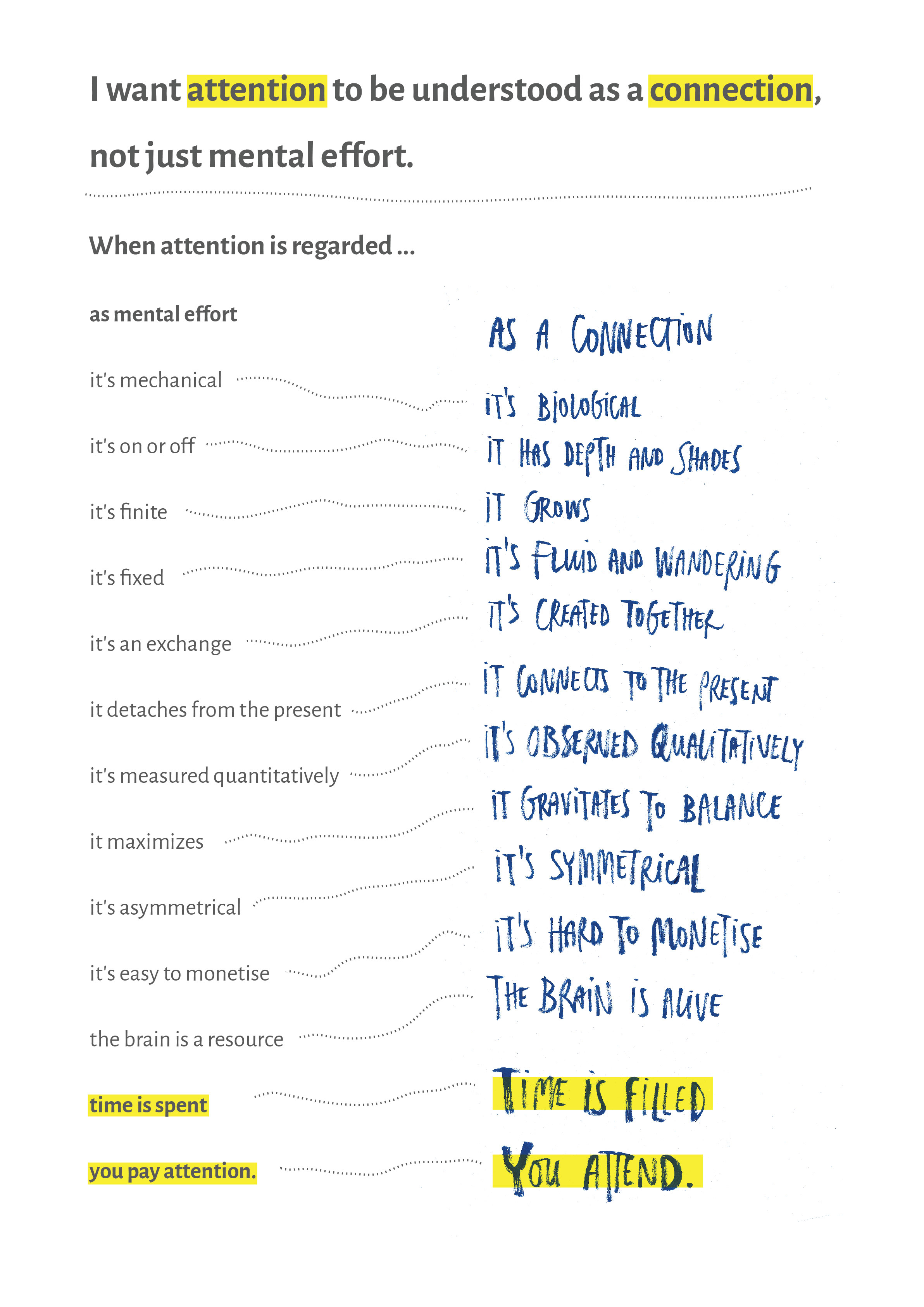
To find a richer way for representing attention, and convey more than a few digits, I imagined attention as nurturing a relationship between subject and object–including external distractions and interruptions (internal ones are excluded for not disturbing the situation with questions or mind-reading). Does the object catch the bottom-up perception or we need to draw on top-down control to focus? What emotions are visible on the observed person? Is she excited and active, or calm and passive?
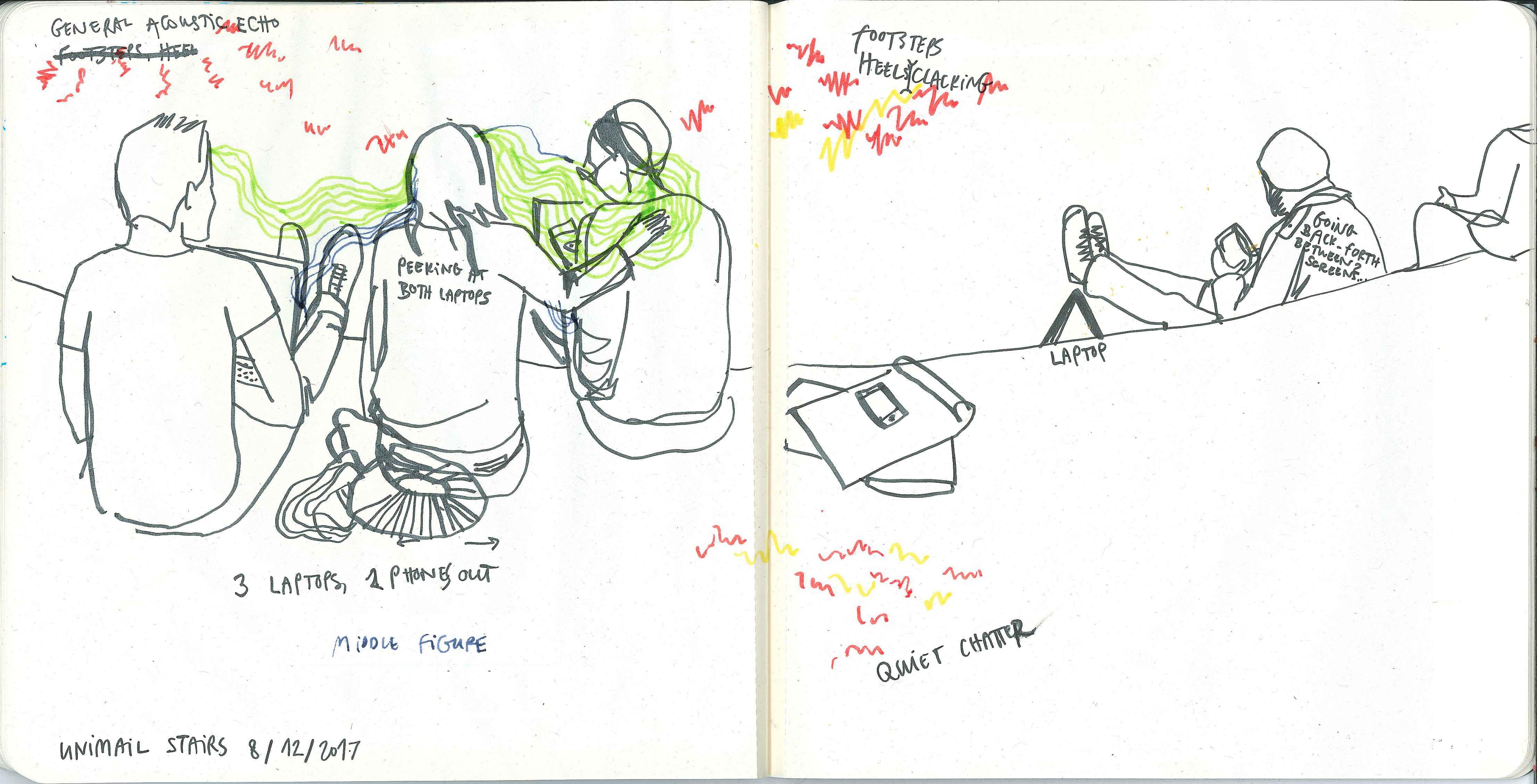
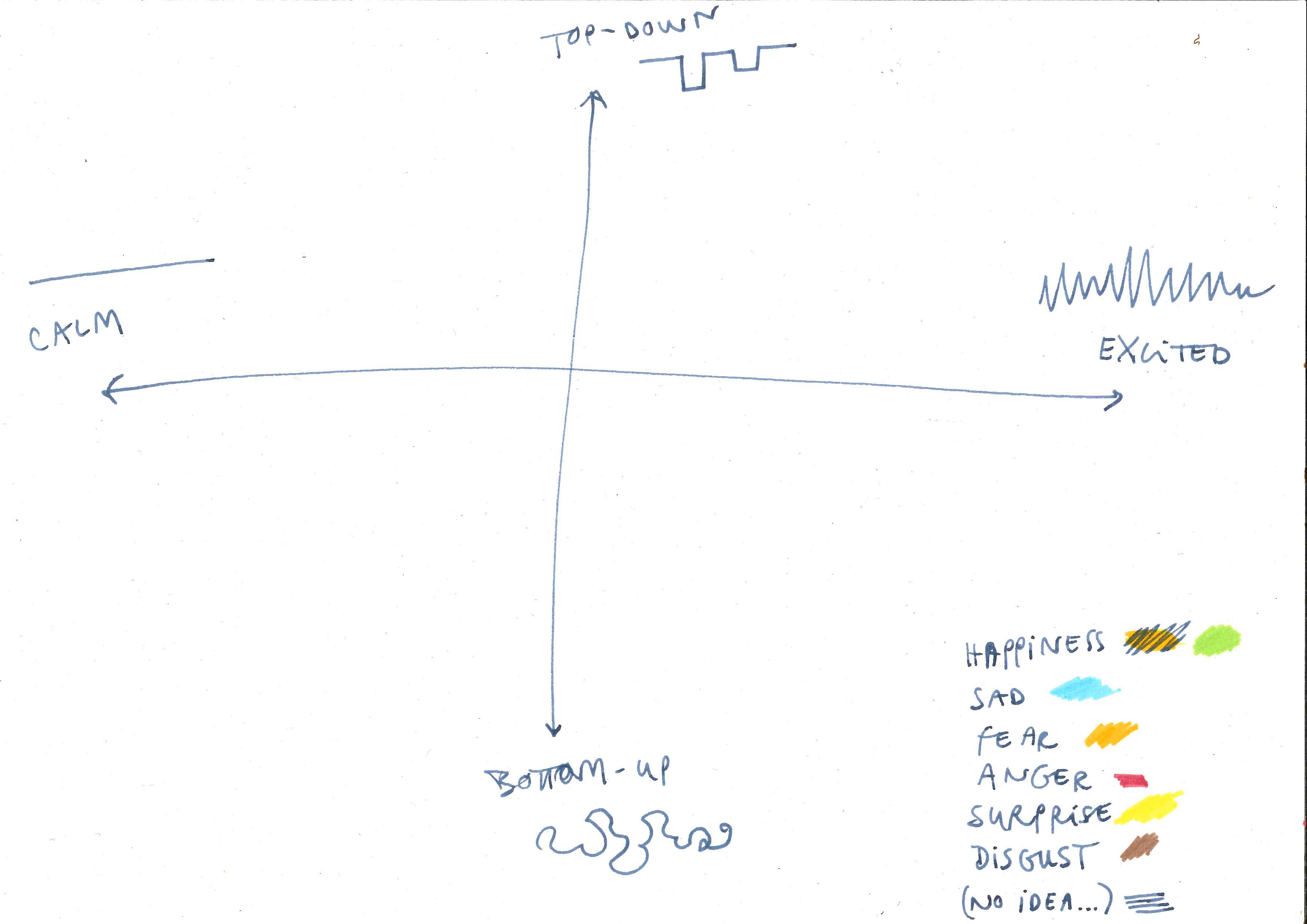
First by observation and improvising on the spot, then independently visualizing mental processes, I came up with the above visual solution. While the line quality is meaningful, the color choices are arbitrary. Next to browsing through philosophy and neuroscience papers on the topic (many of which you can find in the bibliography of my thesis, I have experimented with various line patterns, colours, even associating plants to ways of focusing (which looked pretty, but ultimately did not work out).
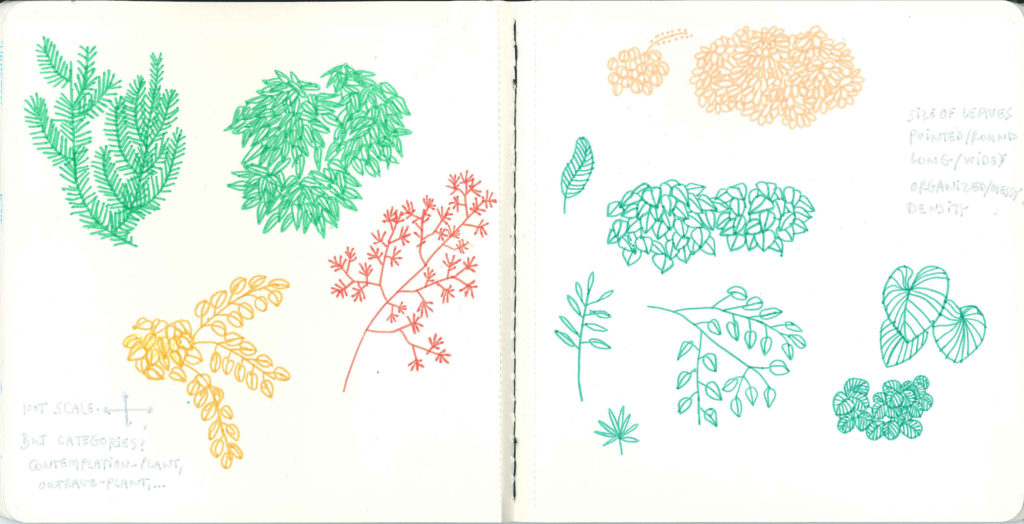
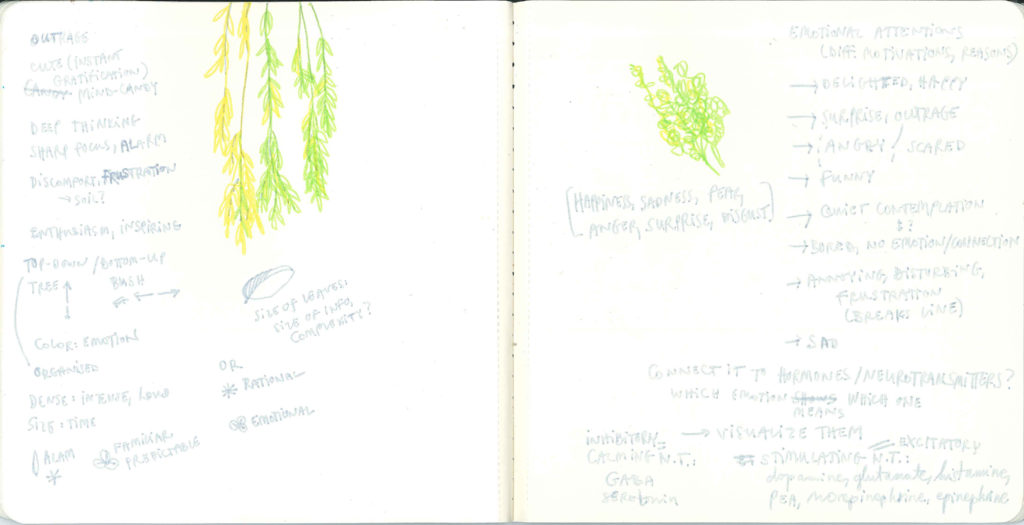
The final diagram was inspired by Gazzaley, Adam, and Larry D. Rosen: The Distracted Mind–Ancient Brains in a High-Tech World & Clifford Nass, Corina Yen: The Man Who Lied to His Laptop, chapter 4.
After coming up with the diagram, I started to use it during observation by picking one subject at a time, and noting not just the object of their focus, but also how forced their focus appeared to be, and what emotions could I detect during these short time periods.
The first scene was the staircase of the Unimail building at the University of Geneva, where students casually sit down and chat or work together. It is a quiet but social place.

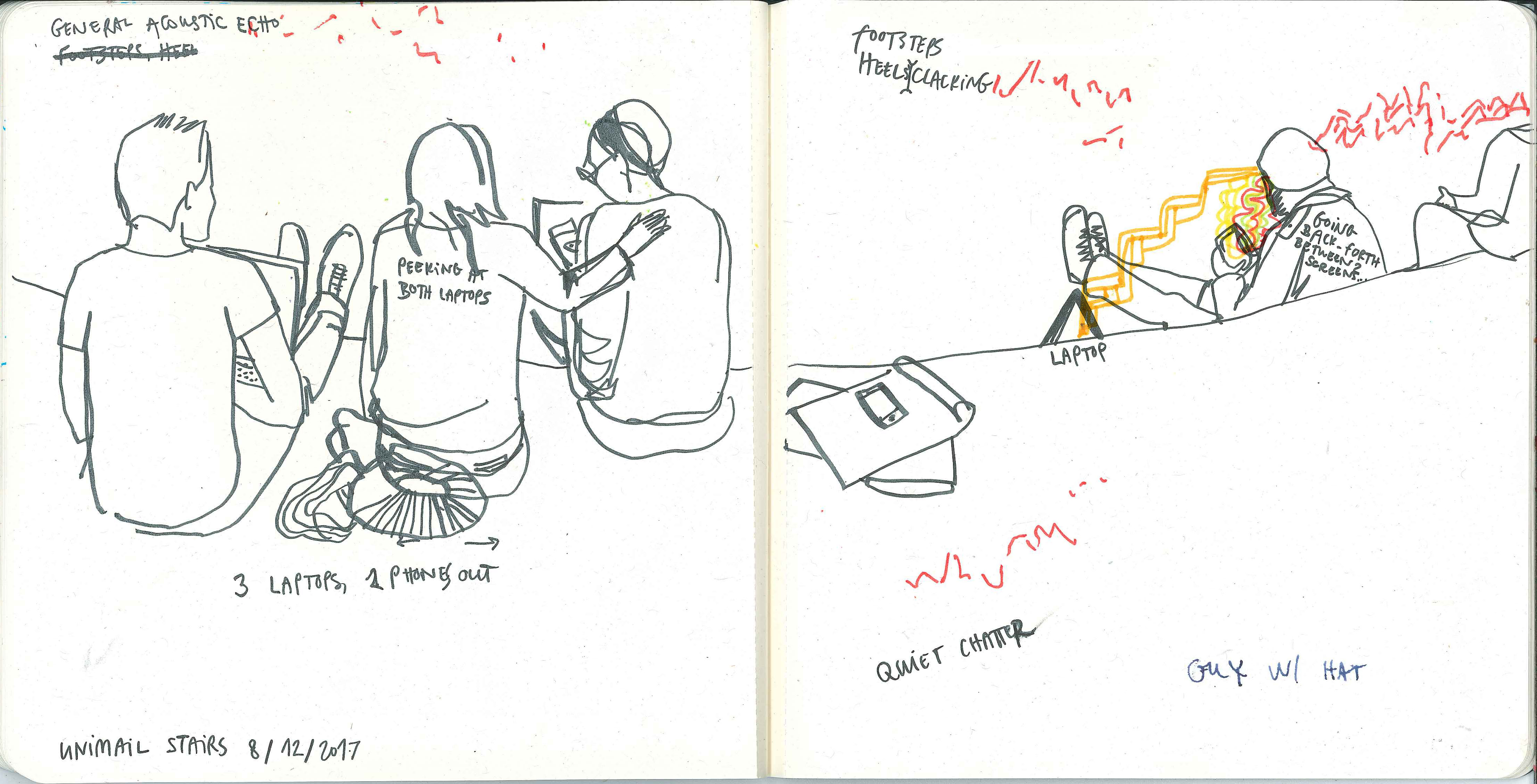
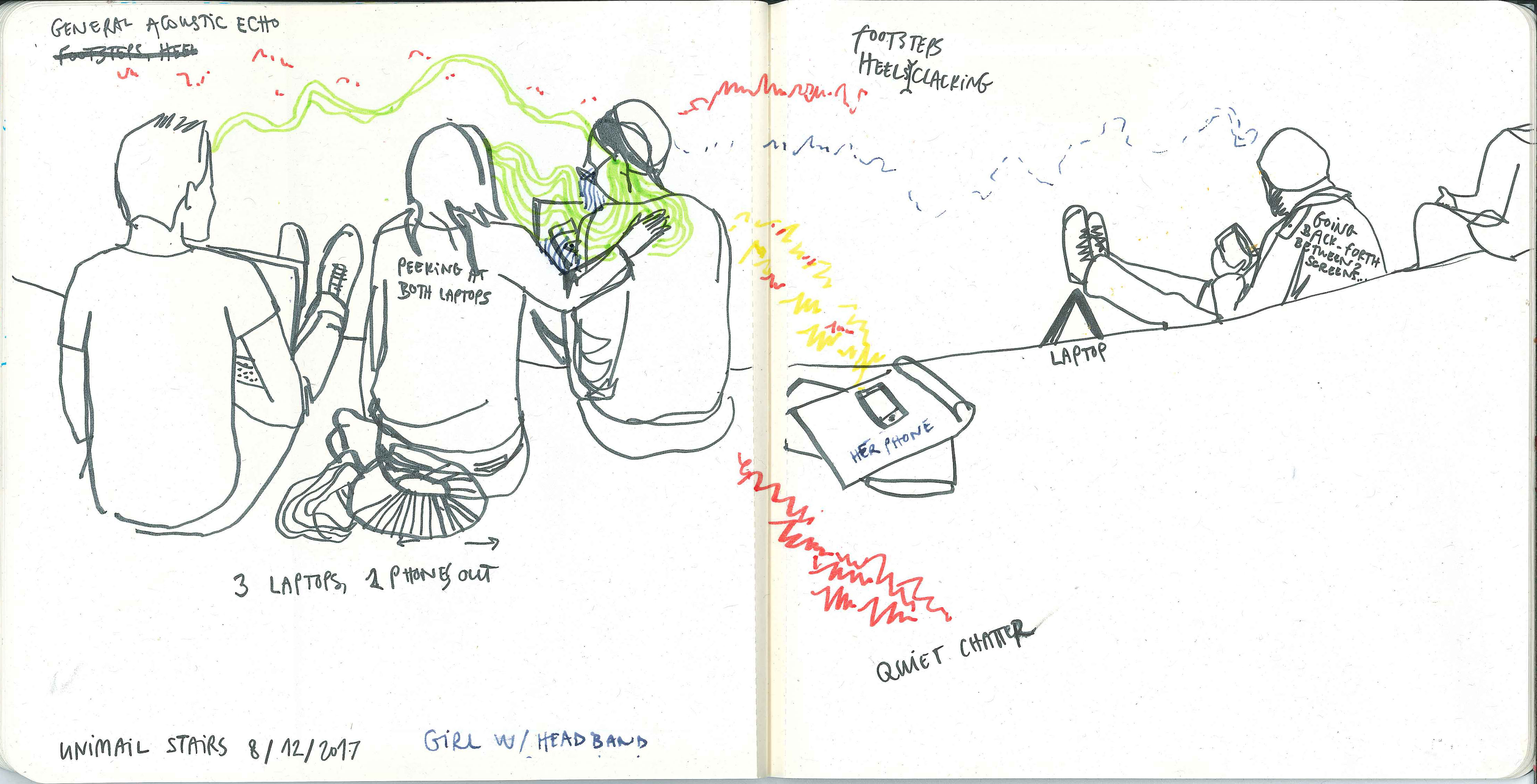
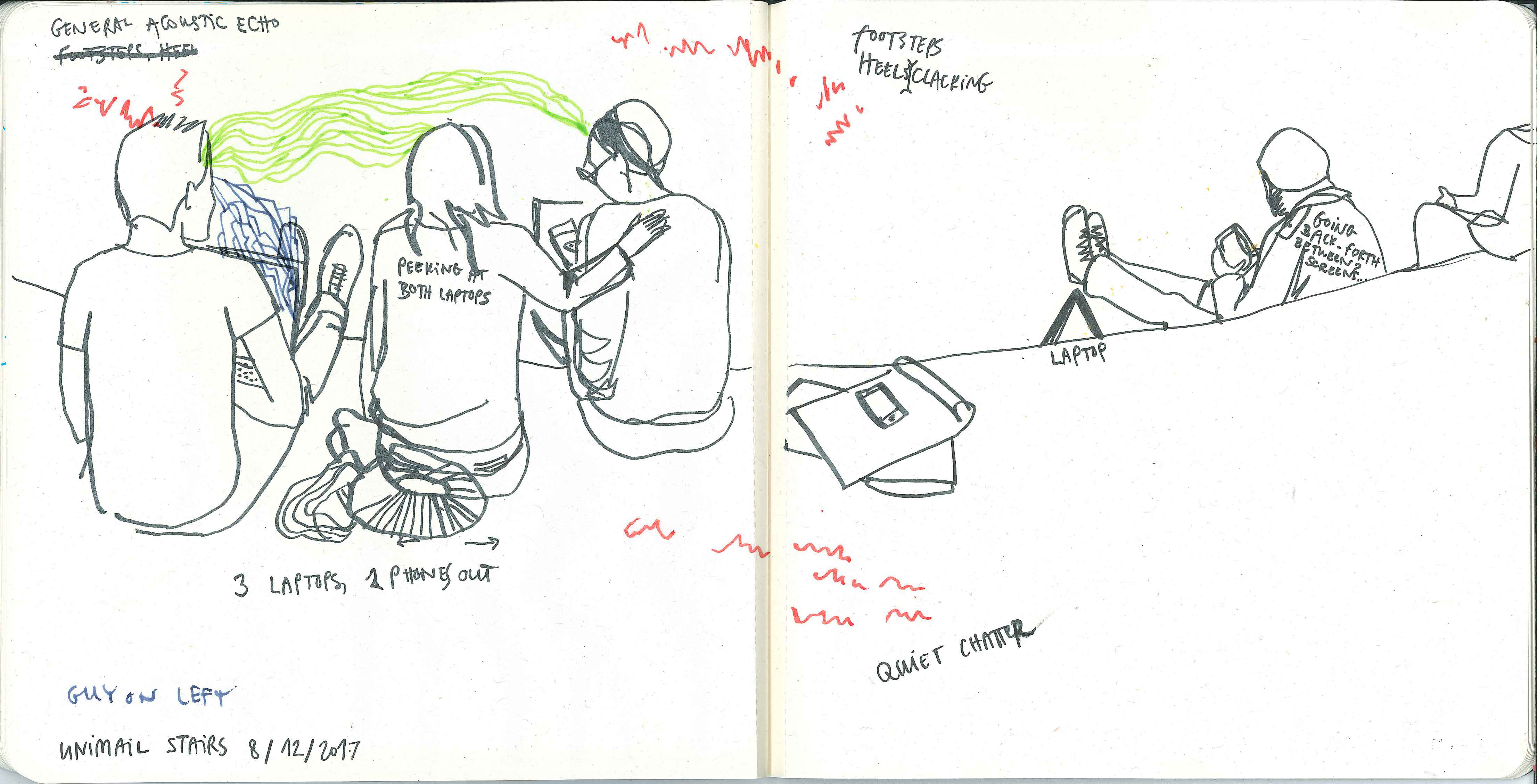
The next scene was the library, where deep individual sustained focus is the norm.
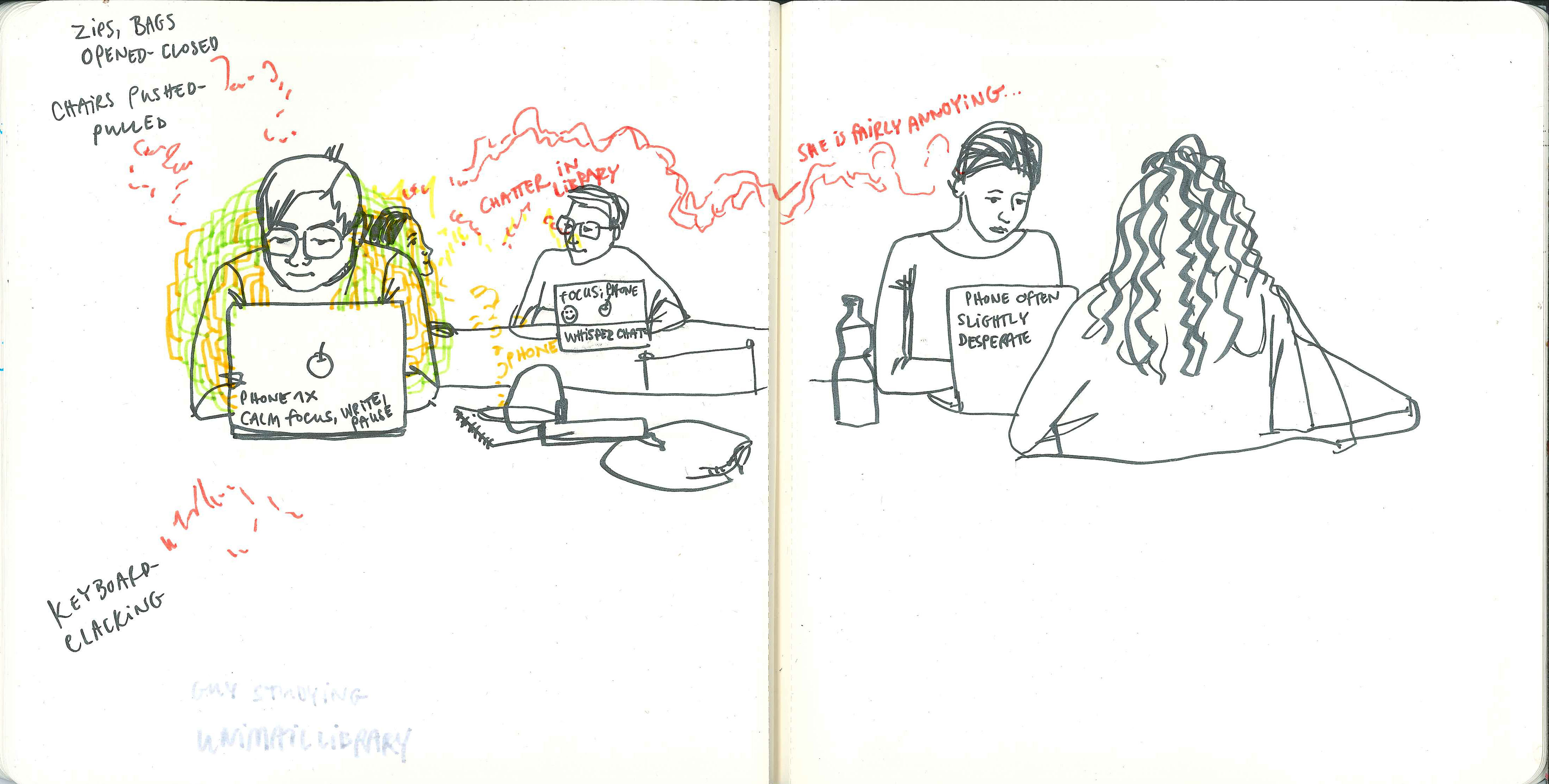
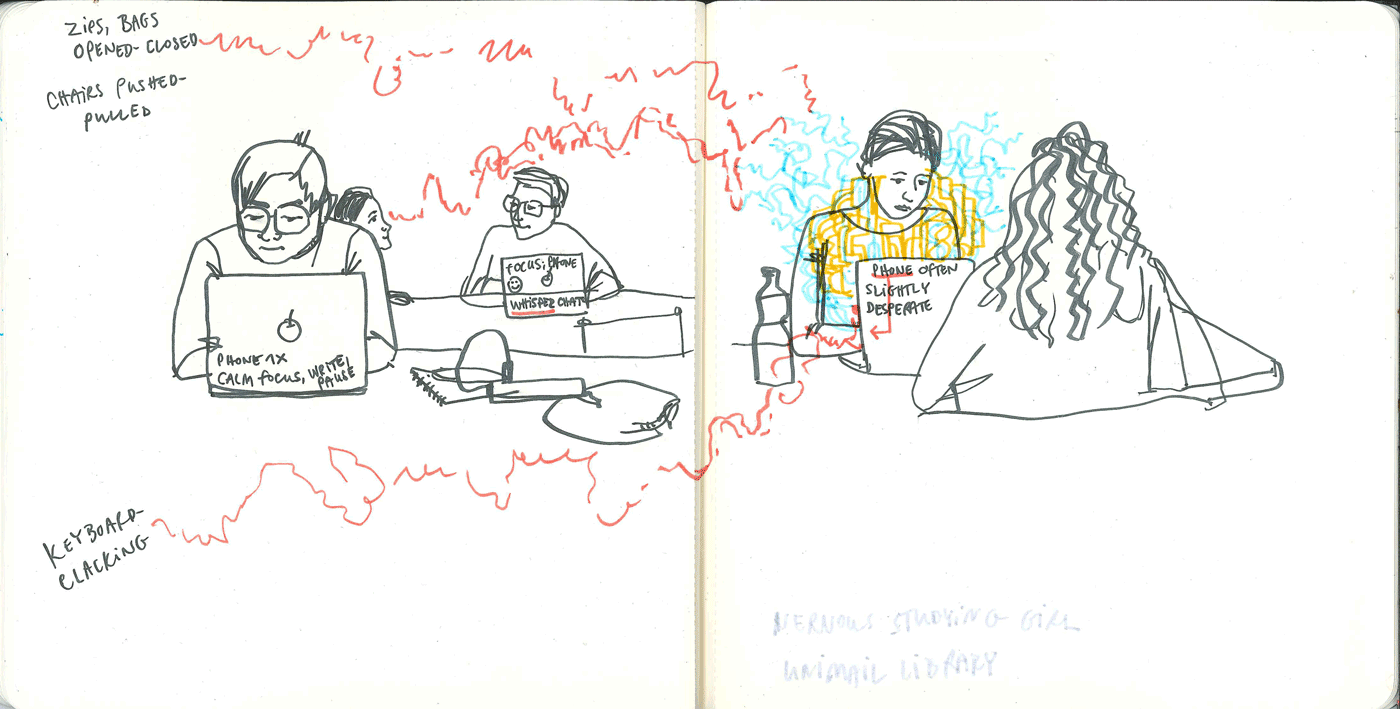
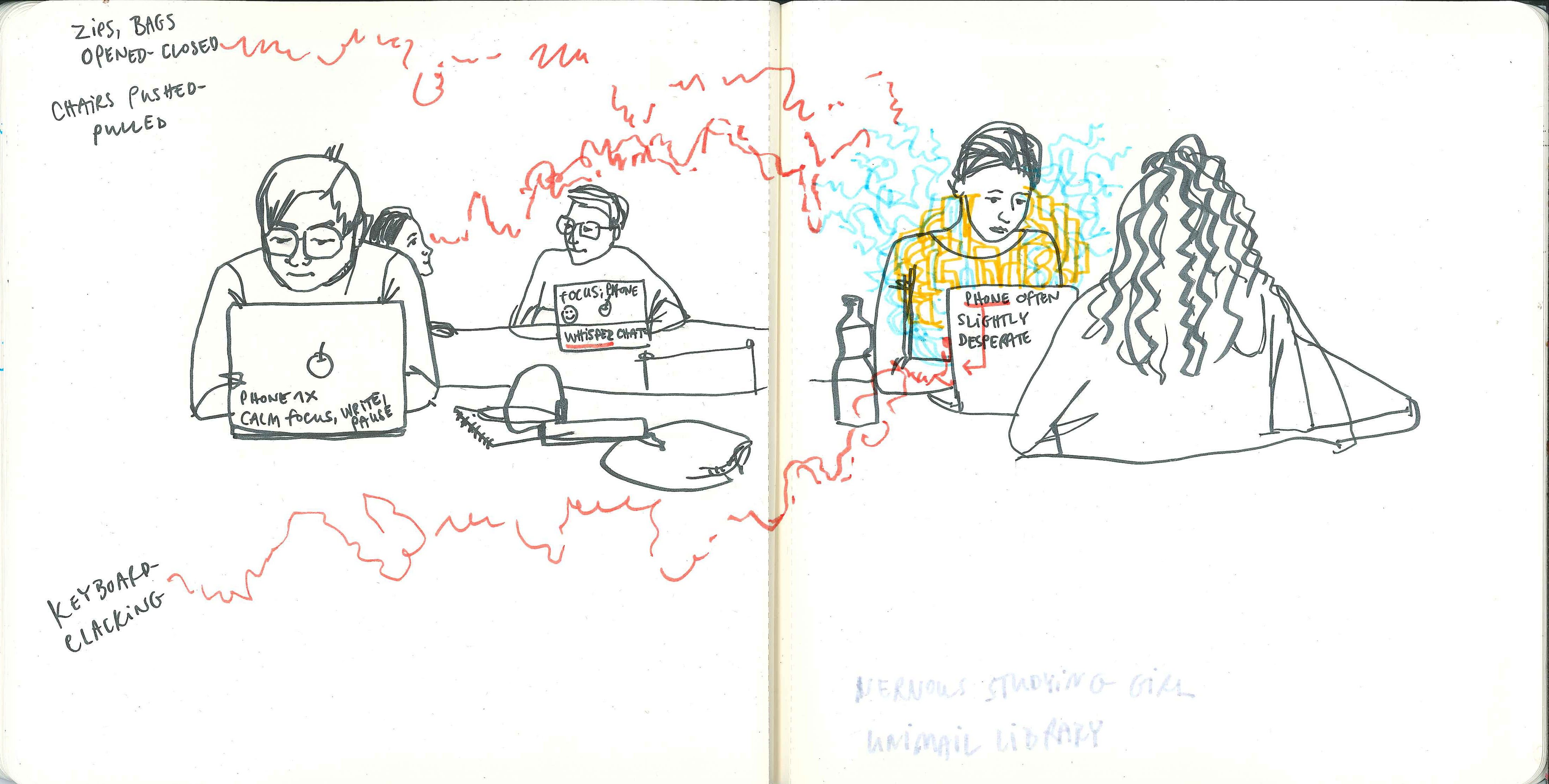
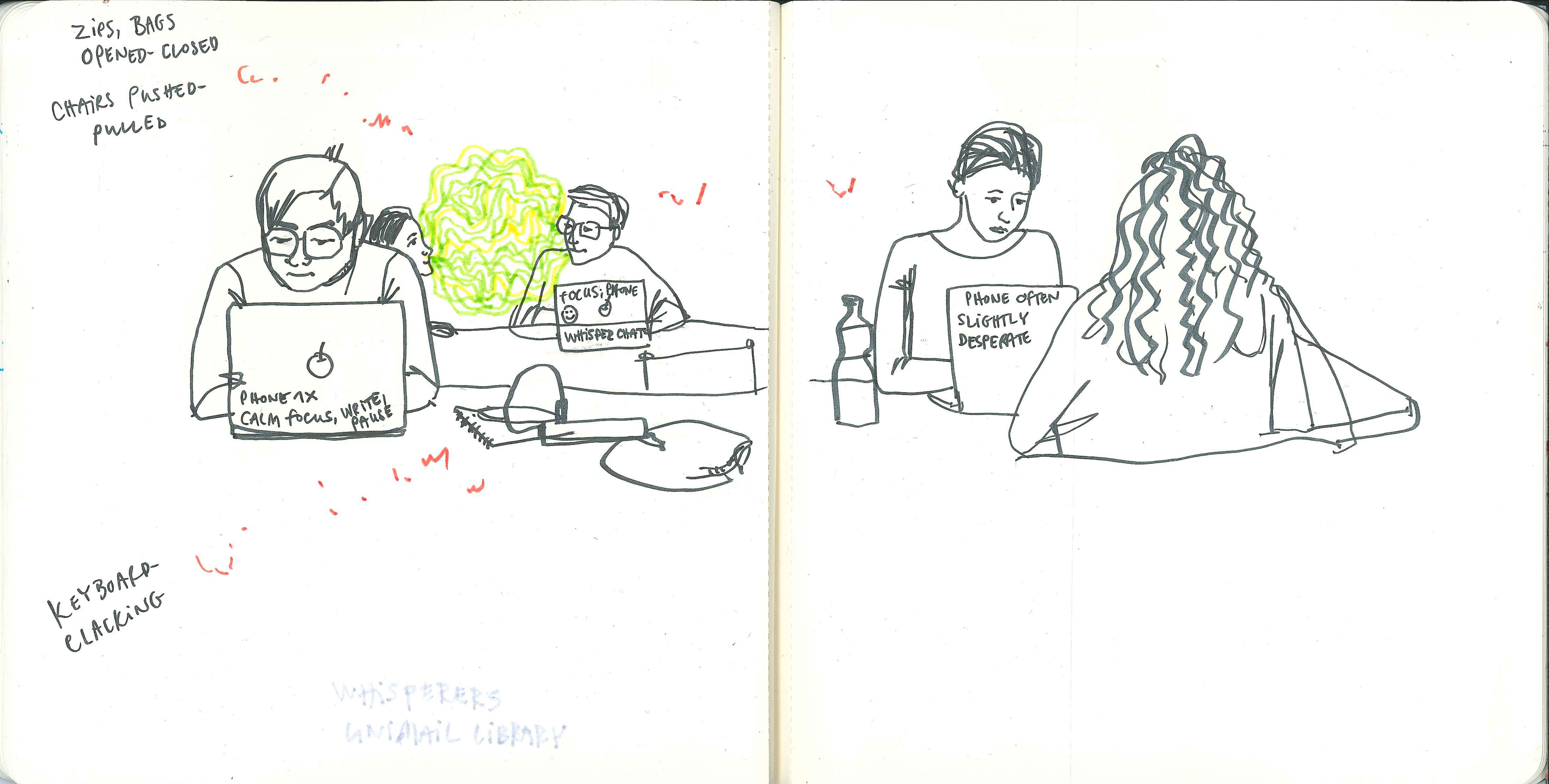
Conferences (and shows, lectures, etc) are places of joint attention. The speaker tries to perceive all the audience...
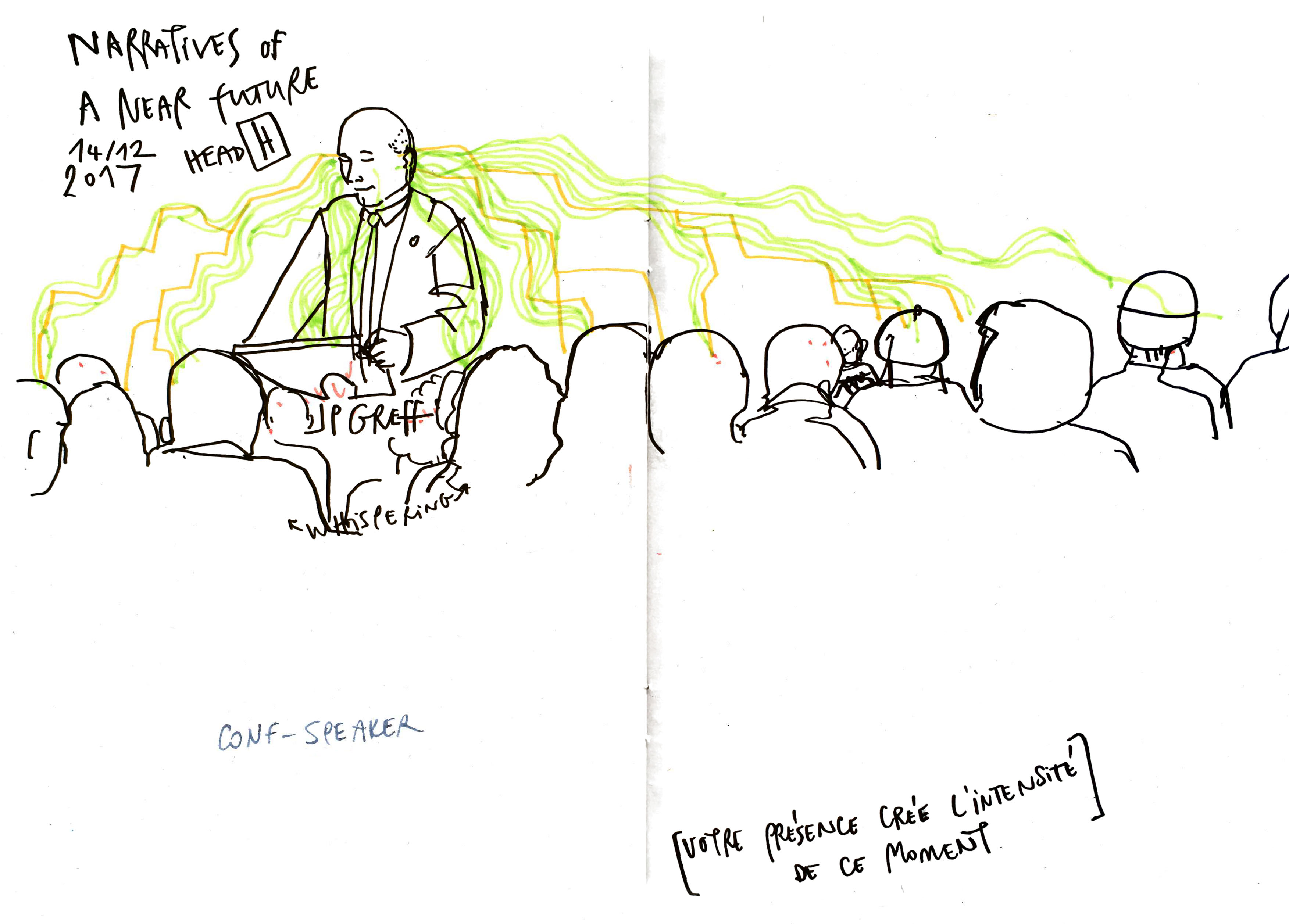
... while individual members of the audience sometimes switch quickly between the talk and something else.
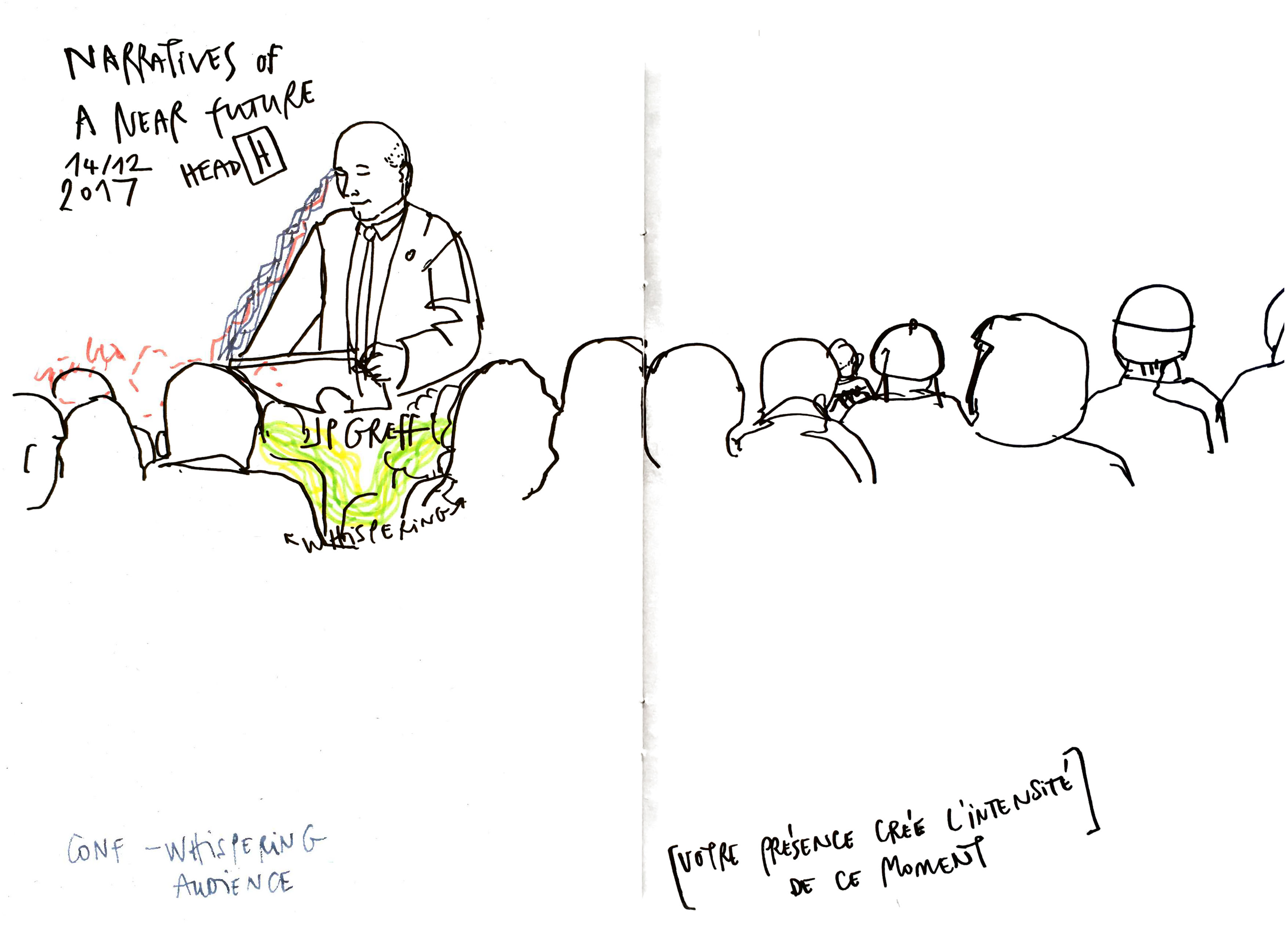
As the malls overwhelm by competing for people's senses with advertisements, it was impossible to pick one subject and object; I tried to depict the general cacophony instead.
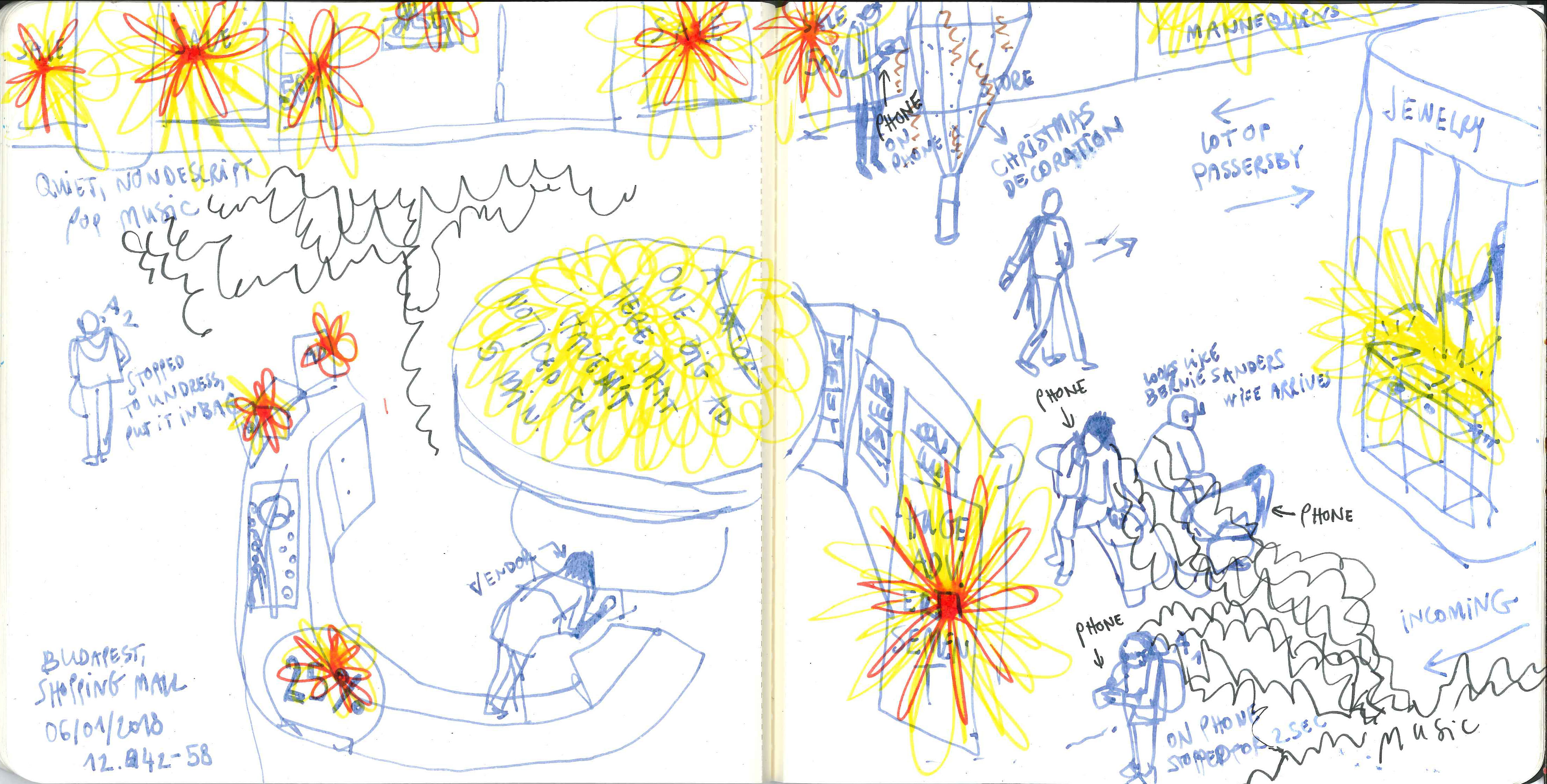
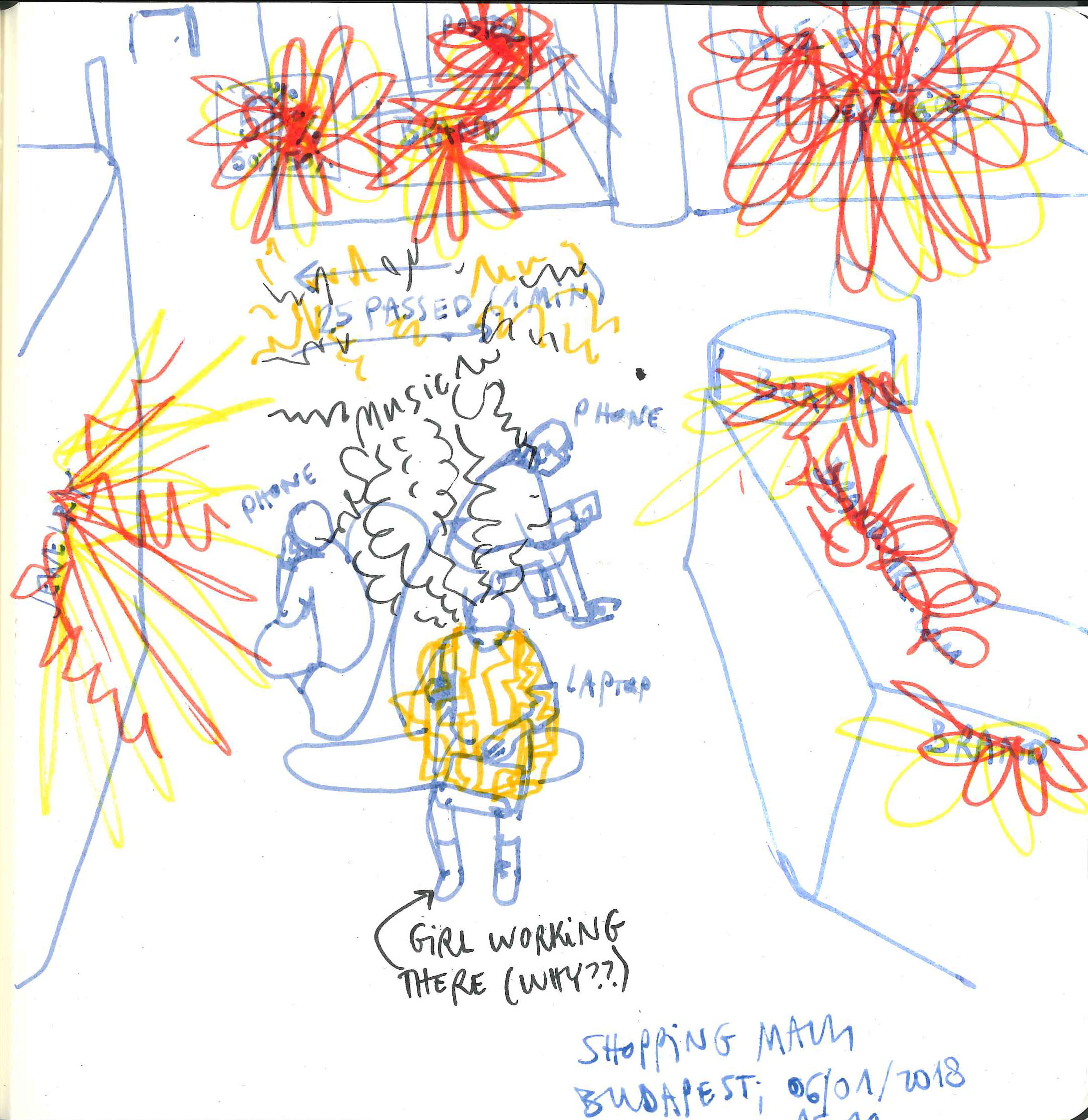
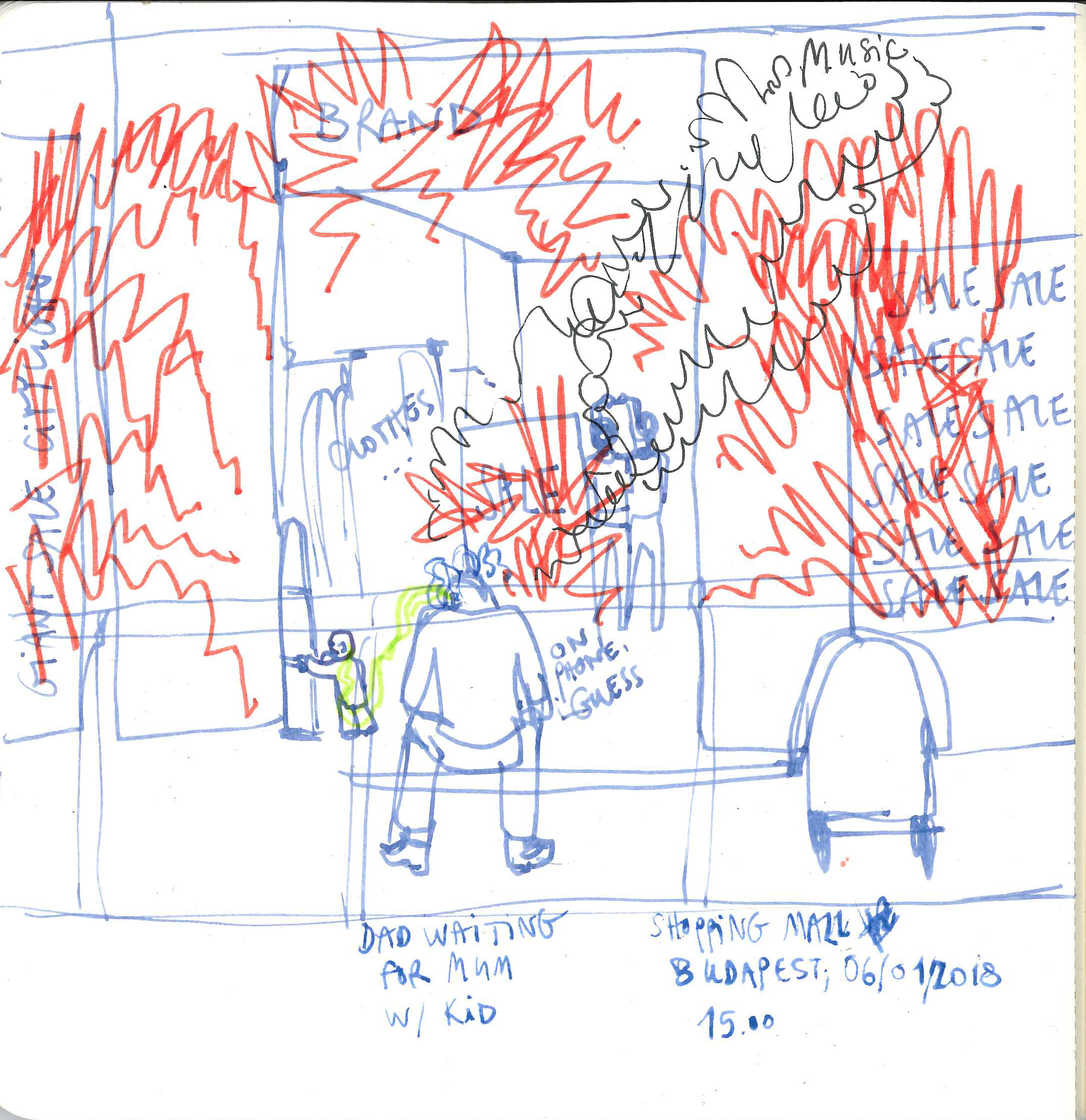
The project has its limitations: only the visible distractions and interruptions can be observed, and an interview would disturb the subject's attentional state. Still, a simple coloured line already conveys more information than merely counting time spent, coming closer to showing the allocation of attention between subjects and objects in a digital or physical space. These lines form an ‘ecology of attention’, as described by Yves Citton.
At the same time, the lines originate and belong to someone's mind, so another metaphor is to imagine these lines as mental hair: an extension of our minds towards our object of focus–or distraction.
The concept of mental hair was put to use in my design fiction MA project, Vibe Antenna.
HEAD Genève Media Design MA 2018
Tutors: Dominic Robson, Gordan Savičić
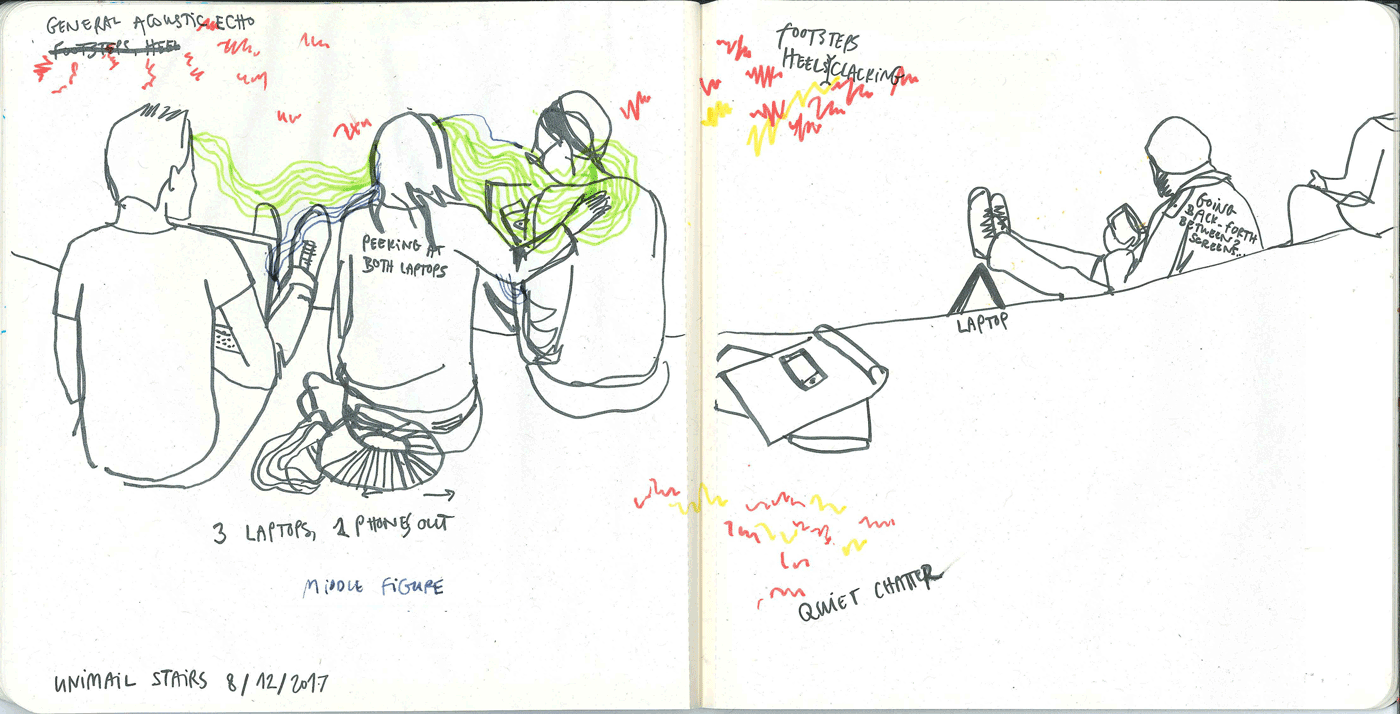

No comments.